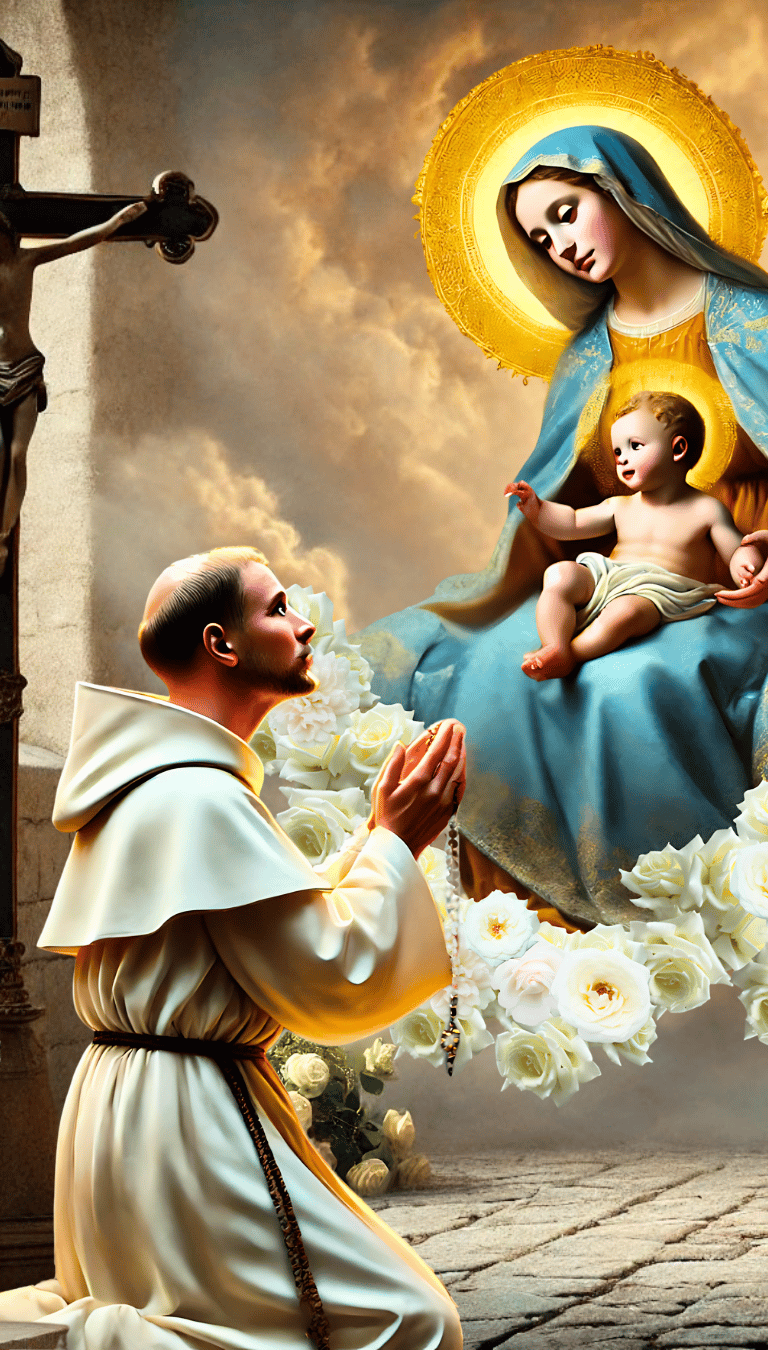St. Dominic and the Torch of Truth
Feast Day: Aug. 8 | Patron of astronomers, preachers, seekers of truth
Halo & Light Studios
8/8/20252 min read


Click Link for a reel of Daily Dose of Saints and Faithful Art:
https://youtube.com/shorts/xr3scCB1SWE?feature=share
Before he founded an order, before he preached to heretics, St. Dominic de Guzmán was simply a Spanish boy born into nobility—yet destined for something far greater than honor or land.
Born in 1170 in Caleruega, Spain, Dominic was sent at just 14 years old to study the arts and theology in Valencia, and later at the prestigious University of Salamanca. Gifted with both intellect and integrity, he pursued truth with a scholar’s mind and a saint’s heart. Eventually, he joined the Canons Regular of St. Augustine in the diocese of Osma, embracing a life of prayer, study, and discipline.
His quiet life changed when he was asked to accompany his bishop, Diego de Acebo, on a royal mission ordered by King Alphonsus IX of Castile: a diplomatic journey to Denmark, where they were to arrange a marriage alliance between the Spanish crown and Danish royalty. The marriage never happened—but along the way, Dominic encountered something even more urgent: souls being lost to heresy.
Traveling through southern France, Dominic saw firsthand the spread of Albigensianism, a heresy that denied the goodness of creation and rejected the sacraments. It was there that his mission crystallized—not politics, but preaching; not diplomacy, but doctrine.
In 1216, he founded the Order of Preachers, known today as the Dominicans. These friars were to be poor, prayerful, and powerful in truth. They studied rigorously, lived humbly, and preached fearlessly. Dominic believed that the Church could only be renewed by holiness and clear teaching—not force.
Tradition holds that the Blessed Virgin Mary entrusted the Rosary to Dominic as a weapon against heresy and despair. Through meditating on Christ’s mysteries with Mary, hearts would be brought back to truth.
One detail many overlook: the reason the pope wears white today is because of the Dominicans. When Pope St. Pius V, a Dominican, was elected in 1566, he kept wearing his white habit as pope. It became the standard papal dress ever since—a quiet Dominican legacy wrapped in visible humility.
In sacred art, Dominic is often shown holding a torch, symbolizing the fire of truth, or a book and lily, reflecting his wisdom and purity. A dog bearing a torch in its mouth often accompanies him, a pun on the Latin Domini canes—“Hounds of the Lord.”
Dominic died in 1221, worn out from preaching, penance, and prayer. But he left behind an order that would give the Church theologians like Thomas Aquinas, mystics like Catherine of Siena, missionaries like Rose of Lima, and defenders of the faith across continents and centuries.
In an age of confusion and corruption, Dominic reminds us: truth matters. But it must be preached with holiness, humility, and love—because the Gospel is not an argument to win, but a fire to share.
St. Dominic, preacher of grace and light of the Church, pray for us.
